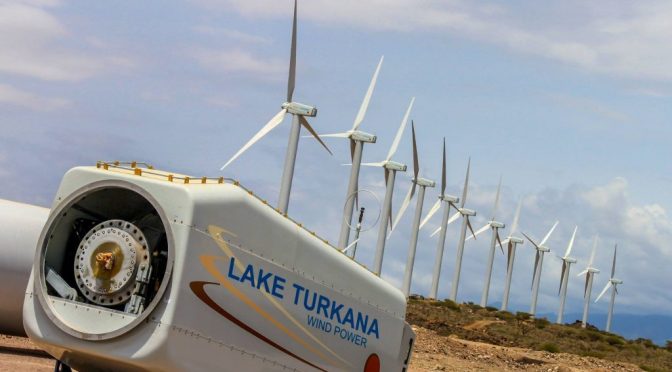Kenya’s vast and untapped wind energy resources have the potential to significantly transform the country’s energy landscape, providing a much-needed breath of fresh air for the energy market. With an estimated potential of over 3,000 MW of wind power, Kenya is poised to become a major player in the renewable energy sector, not only in Africa but also on the global stage. The government’s commitment to increasing the share of renewable energy in the country’s energy mix, coupled with the recent commissioning of the largest wind farm in Africa, is a testament to the enormous potential that lies in harnessing Kenya’s wind power.
The Lake Turkana Wind Power project, which was officially inaugurated in July 2019, is a prime example of the country’s efforts to tap into its vast wind energy resources. The project, which is the largest of its kind in Africa, consists of 365 wind turbines with a combined capacity of 310 MW. This is enough to power over a million households in Kenya, providing a significant boost to the country’s energy supply and reducing its reliance on expensive and environmentally harmful fossil fuels.
The success of the Lake Turkana Wind Power project has not only put Kenya on the renewable energy map but has also demonstrated the viability of large-scale wind power projects in the country. The project has attracted significant international attention and investment, with the African Development Bank, the European Investment Bank, and several other international financiers providing funding for the project. This is a clear indication of the growing confidence in Kenya’s ability to harness its wind power potential and transform its energy landscape.
One of the key factors that make Kenya an attractive destination for wind power projects is its favorable wind conditions. The country is endowed with strong and consistent winds, particularly in the northern and eastern regions, which provide an ideal environment for the generation of wind power. Moreover, Kenya’s equatorial location ensures that it receives a steady supply of solar radiation throughout the year, making it an ideal candidate for the development of hybrid wind-solar power systems. Such systems can help to overcome the intermittency challenges associated with wind power, ensuring a more stable and reliable supply of electricity.
The government of Kenya has also played a crucial role in promoting the development of wind power in the country. The country’s ambitious Vision 2030 development blueprint identifies renewable energy as a key driver of economic growth and has set a target of increasing the share of renewable energy in the country’s energy mix to at least 50% by 2030. To achieve this goal, the government has implemented a range of policy measures and incentives aimed at encouraging investment in the renewable energy sector, including the provision of tax breaks and feed-in tariffs for wind power projects.
The development of wind power in Kenya is not without its challenges, however. Land acquisition and the construction of transmission infrastructure have been identified as some of the major hurdles facing wind power projects in the country. Additionally, the intermittency of wind power presents a challenge to the stability of the national grid, necessitating the development of energy storage solutions and grid management strategies.
Despite these challenges, the potential benefits of harnessing Kenya’s wind power resources are immense. The development of wind power can help to diversify the country’s energy mix, reduce its reliance on fossil fuels, and contribute to global efforts to combat climate change. Moreover, the growth of the wind power sector can create thousands of jobs and stimulate economic growth, particularly in rural areas where the majority of wind power projects are located. As Kenya continues to tap into its vast wind energy resources, it is clear that the country is on the path to a more sustainable and prosperous future, powered by the breath of fresh air that is wind power.


